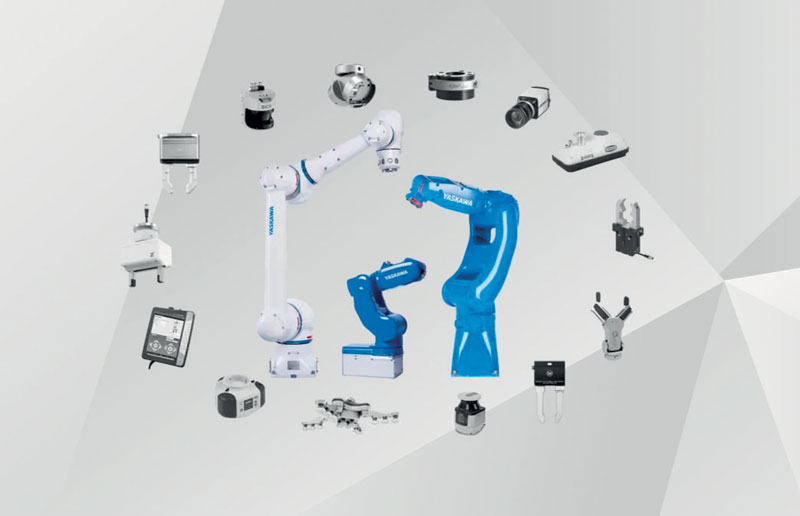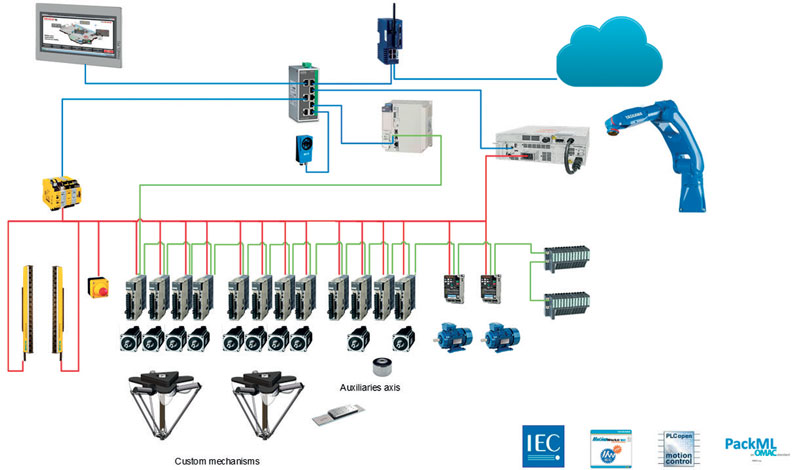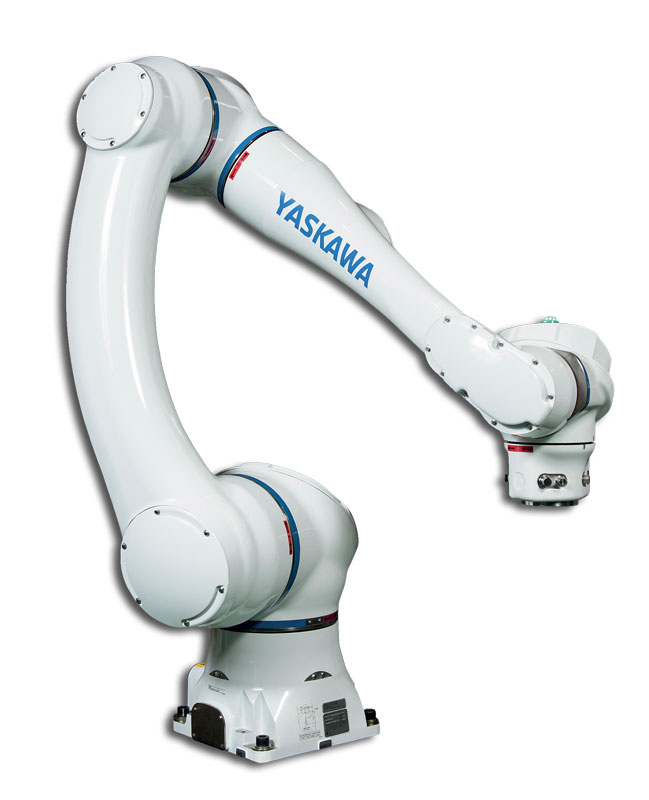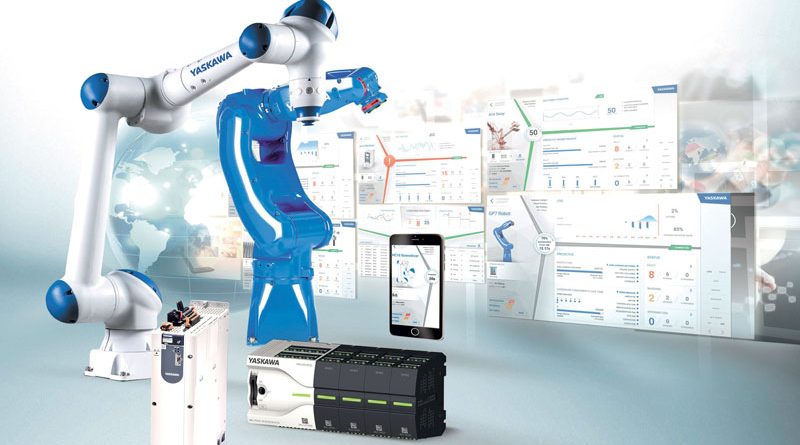A flexible assembly cell thanks to the robot
How much flexibility can a robotic assembly cell provide? A great deal, as Carlo Quaglia, Area Sales Manager of Yaskawa Italia, and Francesco Fraschetta, Sales Director of Bonetto Automazione, explained to us during their talk at the Assembly Week. Over the years, they told us, the needs of system integrators have changed, and robotized solutions respond well to new production requirements.
Yaskawa invented the word ‘mechatronics’, so we can say that we are dealing with one of the founders of the sector. Carlo Quaglia, could you provide us with a brief overview of the company and its Italian branch?
The term Mechatronics was coined in 1969 by Tetsuro Mori, an engineer at our Corporation, and the trademark was successfully registered in 1971. Subsequently, the term, free from legal constraints, came into common use globally. But our company’s history began much earlier. Founded in 1915 in Kurosaki, Kitakyushu City in Japan, Yaskawa Electric is a specialist in the fields of drive technology, industrial automation and robotics. The philosophy guiding us has always been to provide products of the highest quality: the continuous search for innovation and the mission to change the world have driven us to search for innovative ideas and revolutionary technologies and to propose more and more solutions for the world of automation. A commitment rewarded by results such as the sale of 500,000 Motoman robots and the production of 30 million inverters and 20 million servomotors. The continuous search for innovation has also been rewarded by Clarivate Analytics, which this year, for the sixth consecutive time, has included the Yaskawa Group in its ranking of the 100 most innovative companies.
We are present worldwide with 60 local offices and more than 14,500 employees, which makes it easy to find products and service everywhere, further guaranteeing the effectiveness of maintenance operations on export machines. In Europe, we have more than 1,900 employees in 23 subsidiaries and 8 production facilities. The latter provide us with a short supply chain and therefore the possibility of supplying the market quickly and efficiently. Currently, R&D is carried out in Japan; in Europe, the headquarters are in Germany, divided into two sites: one in Allershausen, near Munich, which is responsible for robot activities; the other in Eschborn, near Frankfurt, which is responsible for Drive and Motion. Yaskawa Italia is the subsidiary representing on the national territory the Robotics and Drives, Motion & Controls divisions of the group. In activity since 1994, it has three locations: Orbassano (near Turin), Buccinasco (near Milan) and Modena. Among the 23 branches in the old continent, we are the most important in terms of revenues, especially following the acquisition of the ZF Group’s business unit involved in Drive & Motion.

Yaskawa innovates again with the Total Solution proposal, how does this project fit within the solutions to be proposed to System Integrators and finally to the end customer?
Following the acquisition of ZF Italia’s Factory Automation Business Unit and the opening of the subsidiary in Buccinasco (near Milan) in 2019, we are promoting an approach to automation that we call “Yaskawa Total Solution”, providing a complete solution to all our customers’ needs, related to robotics, drive or motion control issues. A particularly interesting development in this respect is the concept of Singular Control, by which we describe the possibility of continuously managing production along the entire line. This idea is realised through the compact MP3300iec RBT Machine Controller, which can enable the control of robots, motion control, inverters and distributed I/O systems through a single device. The result is a very powerful solution capable of supporting complex systems easily.
In order to allow the user to manage every situation, even the most articulated and evolved ones, in the best possible way, we provide operators with another important element: a highly evolved pre- and post-sales mechatronic technical service. Our experts assist customers with application design activities and the modelling of IEC controller code, as well as the sizing of axes and the choice of transmission components. Being able to take advantage of the application skills of Yaskawa’s technical service, the result of more than 25 years of experience, is an important tool to find the best solution to reduce costs while maintaining the required level of performance.

Of course, Yaskawa works with many system integrators. One of these is Bonetto Automazioni, which offers a flexible robotic assembly cell equipped with a robot, model GP25. I would like to ask Francesco Fraschetta, Sales Director of Bonetto Automazioni: what does this robot do and why was Yaskawa chosen?
Over the years, our philosophy has led us not to consider robots as a tool useful only for moving components from one work station to another, but to try to integrate as many functions as possible, in addition to handling, into the robot itself. Depending on the configuration chosen, the cells can carry out various automatic assembly operations such as: handling, pressing, screw tightening, gluing and laser welding of plastic or metal materials, but also repetitive and time-consuming activities such as end-of-line packaging and material sorting.
To achieve this, we have designed and built an assembly cell, characterised by a very high level of flexibility. The cell, complete with a robot, represents the standard base, totally customisable according to the different needs and requirements expressed by the client through the assembly system placed on the robot wrist (GOs). In order to achieve this level of customisation, it is necessary to proceed initially with a careful study of the end effector, that is, the device or tool which, placed at the end of a robotic arm, handles the objects or parts which need to be moved but also controlled and processed. This allows the robot to no longer limit itself to handling, but also to be able to pick up components which can be handled using a variety of technologies, including bin picking and vibration-pallet sorting, and assemble the component directly on the gripper. At the end of these operations, the part can then be unloaded onto the conveyor, which will take it to the next station. Here one of our standard cells will carry out the next assembly operation.
Through a major engineering effort, our technicians have succeeded in transforming what was previously a fixed station, where the robot only had the task of loading/unloading the part, into a gripping and assembly system integrated directly on the robot’s wrist. This has as a direct consequence a tangible increase in terms of flexibility in retooling and consequently in production flexibility. Specifically, the decision to use the GP25 robot in our cells stems from the need for a flexible 6-axis handling robot capable of providing a payload of 25 kg and guaranteeing a compact and space-saving set-up thanks to the hollow wrist.
The solutions proposed by Bonetto with Yaskawa are modular and plug & play, so they are very easy to implement in companies. I would like to ask Francesco Fraschetta again, what are the advantages of this approach?
To answer this question, it is necessary first of all to take a moment to consider how the customer’s needs and timeframes have changed over the years. Times have become shorter and shorter, the downtime required to install a cell needs to be reduced to a minimum, space is very limited and the need for cells capable of handling different processes has grown. The advantage of our approach is to meet these needs through modularity.
The standardisation of the cell has shifted the customisation to the gripper and, by means of an automatic and fast change of the end effector, has allowed a considerable reduction in investment costs. With this method, a single cell can integrate a greater number of operations. A further advantage of this configuration is the speed of adaptation in the event of a sudden increase in production. In such a situation, where it would be necessary to add more standard cells, it would be possible to equip them quickly and practically by splitting up the GOs of the first cell and also distributing the management software automatically. This would allow any increase in demand to be managed in a short time with a very low initial investment. On the other hand, if a change of production is required, the reconfiguration of our cell would guarantee a simple and rapid changeover with a significant reduction in the technical time required. Thanks to the three all-in-one quick release stations (mechanical, electrical and pneumatic) with which the cell is equipped, the assembly/feeding/other operating groups can be easily modified to suit the current production.

As the standard cell is already designed and ready to be manufactured, we also guarantee a greatly reduced time to market. To conclude, I would like to ask Carlo Quaglia how Yaskawa, who invented the word, sees the future of mechatronics? What revolutions are in store?
We have many innovations in the works. Our Vision 2025 will guide us, indicating the way to the future of Yaskawa based on three main coordinates: Mechatronics, Humanotronics and Clean Power. The Group aims to contribute to solving customers‘ management issues in addition to creating new added value to society, through evolution of core businesses, and expansion into new technological fields. For example, one goal is to contribute to the evolution of society through the use of renewable resources to ensure a healthy environment and a sustainable planet for all of us. Not surprisingly, one of the corporation’s most recent acquisitions is The Switch, a Finnish company, which is set to become our new Environmental Energy Division. A further target is to ensure that customers achieve high quality through continuous efforts to optimise performance, efficiency and consistency of operations. These objectives cannot be achieved without careful system monitoring.
i³-Mechatronics, where the 3 “i “s stand for integrated, intelligent and innovative, is the solution we have developed to meet these needs: it combines classical mechatronics, ICT and digital solutions to enable effective data collection and management. All our devices are equipped with functionalities designed to allow full access to the related operating and process data. This is processed at the level of the component itself, freeing up computing power in the controller, then the relevant information is collected in a scalable database and made available for analysis and visualisation. At the same time, the current status of each machine can be mapped in real time and correlated with other data sources for coordinated predictive maintenance. Data can also be transferred to ERP, MES, Big Data or AI systems, always with a guaranteed high standard of security.
In the scenario defined by Vision 2025, robots will play an increasingly important role alongside humans in production and will have to be increasingly intuitive and easy to use. This is why the Yaskawa Smart Series has been created: a range of robots with excellent characteristics in terms of performance, payload, safety and productivity. These are pre-configured, user-friendly robots with 100% industrial performance, ideal for customers new to robotics or looking for a simple automation solution. In addition to ensuring the reliability of our robots, they allow perfect integration with Industry 4.0 systems and management with the latest Smart Pendant interfaces, with touch logic similar to that of smartphones, and Easy Teach, where movement is set by manually guiding the robotic arm. The HC series cobots are also part of this family. Besides being able to work side by side with humans, a cobot provides greater versatility with less space (due to the absence of barriers) with respect to a pure industrial robot, all combined with an increasingly intuitive programming and management mode. This means that cobots are attracting considerable interest from fields of application which until now have been less familiar with robotics, especially at a time like the present, when operational flexibility and investments are issues which are more sensitive than ever. But what makes our HC solutions more interesting is their hybrid nature, which allows for an optimal mix between the stability and high movement speeds of an industrial robot and the management of human-robot coexistence (HRC). By managing several Functional Safety Units (FSU), the robot can run at industrial speed if no human is present in the predefined areas, and then switch to a reduced speed if an operator enters it. Six integrated torque sensors ensure rapid detection and management of possible collisions. As a result, the Motoman HC family is perfect for all situations where human-robot coexistence is not a constant, but not an unexpected occurrence. New products coming soon include the new HC20DT Short Arm collaborative robot, scheduled for release later this year, and the new Dual Arm collaborative robots, which you will hear about soon.
Watch the video: https://we.tl/t-Dk9hfs8VNk

